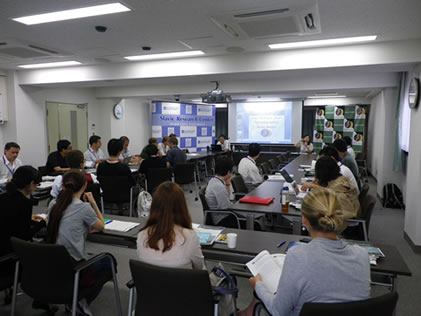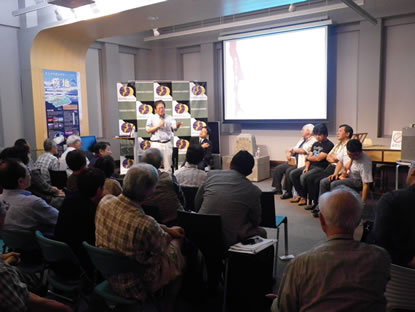| Annual Newsletter of the Slavic Research Center, Hokkaido
University |
Japanese English |
-->List
of All Publications-->Annual
Newsletter-->no.18 |
|
| No.18, February 2011 |
|||
| Remarks from the Director of the SRC |
| Global COE Program “Reshaping
Japan’s
Border Studies” |
Speakers of the Symposium (Dec. 3–4,
2010) |
| Essays by Foreign Fellows |
||
| Feng Yujun |
Alexander Morrison |
|
Global COE Program “Reshaping Japan’s Border Studies”
The global COE program “Reshaping Japan’s Border Studies,” approved in July 2009, has made significant achievements this year. The outcomes can be classified into four areas.
1) Publishing journals
The GCOE edited and published two border-related
journals,『境界研究』[Kyoukai-
Kenkyu] and Eurasian Border Studies (EBR). The first issue of
Kyoukai-Kenkyu features
China-Japan border issues, which coincidentally became a hot topic due
to the Senkaku boat
collision incident. EBR is a specialized journal on Eurasian border
issues and thanks to rush
submissions from around the world, the second issue is forthcoming in
the spring. These
journals are freely downloadable from our website
(www.borderstudies.jp/en).
 |
| Young researchers’ summer program |
2) Organizing a border studies network in Japan
Sponsored by the Sasakawa Peace Foundation, we organized two forums,
the “Tsushima
Borderlands Forum” (Nov. 12–14, Izuhara) and “Toward Networking with
World Border
Studies: Japan’s Borders in Global Perspective” (Dec. 6, Akasaka).
These forums aimed to
bridge academia and practice and to involve researchers and
practitioners in the border study
network, as well as making internal and external comparison of border
issues. This is also
an important step for raising the appeal of worldwide conferences such
as BRIT 2012.
3) Supporting young researchers
The GCOE SRC summer program “Bridging the Borderlands Studies between
East
and West” took place from July 27 to August 4. We had participants from
various countries
including Canada, UK, Australia, Finland, Russia, China, India, and
Macedonia. The lectures
of the first week of the program consisted of talks on Japan’s borders
and border issues,
migration in Central Asia and Russia, and border issues in Central
Europe. The second week
comprised talks on borders in East and South Asia and non-traditional
security issues including
piracy. All the lectures were in English and a certificate of
completion was issued. We also
supported young researchers in conducting their surveys abroad as well
as their attendance
at international conferences such as ABS.
4) Contributing to society
This year, we produced three
exhibitions at Hokkaido University
Museum: “Unknown Borders of the
Northern Borders” (Dec. 2009 – May
2010), “Sea Front of Eurasia: Southwestern
Borders of Japan” (May 2010
– Nov. 2010), and “The Yagui People
and the Border” (Nov. 2010 – Feb.
2011). Serial seminars were held along
with the exhibitions. The exhibitions
and seminars were open to the public
and attracted many citizens. Their
contents were displayed in Kushiro,
Fukuoka, Izuhara, Kamitsushima, and
Naha as a traveling exhibition.
 |
| Seminar at Hokkaido University Museum |
An international symposium held on Dec. 4, 2010, which was the second international winter symposium of the GCOE program, “De-Areanization of Border Studies: The ‘Greater Eurasia’ and Its Neighbors” was held in the Slavic Research Center conference room. Following the structure of the previous symposium, the first global COE symposium “First Contact: Bringing Together the Worldwide Community of Border Studies” (Dec. 18, 2009), the sessions were divided into three parts: a theoretical part, a luncheon seminar, and topics specific to border studies. Simultaneous interpretation was also provided to the audience and many citizens interested in border issues enjoyed the programs. Prior to the symposium, the GCOE program organized a “young researchers’ workshop” and young researchers from Russia, India, Italy, and Japan made border-related presentations. The variety of their topics and areas covered is a characteristic of border studies.
FUJIMORI Shinkichi